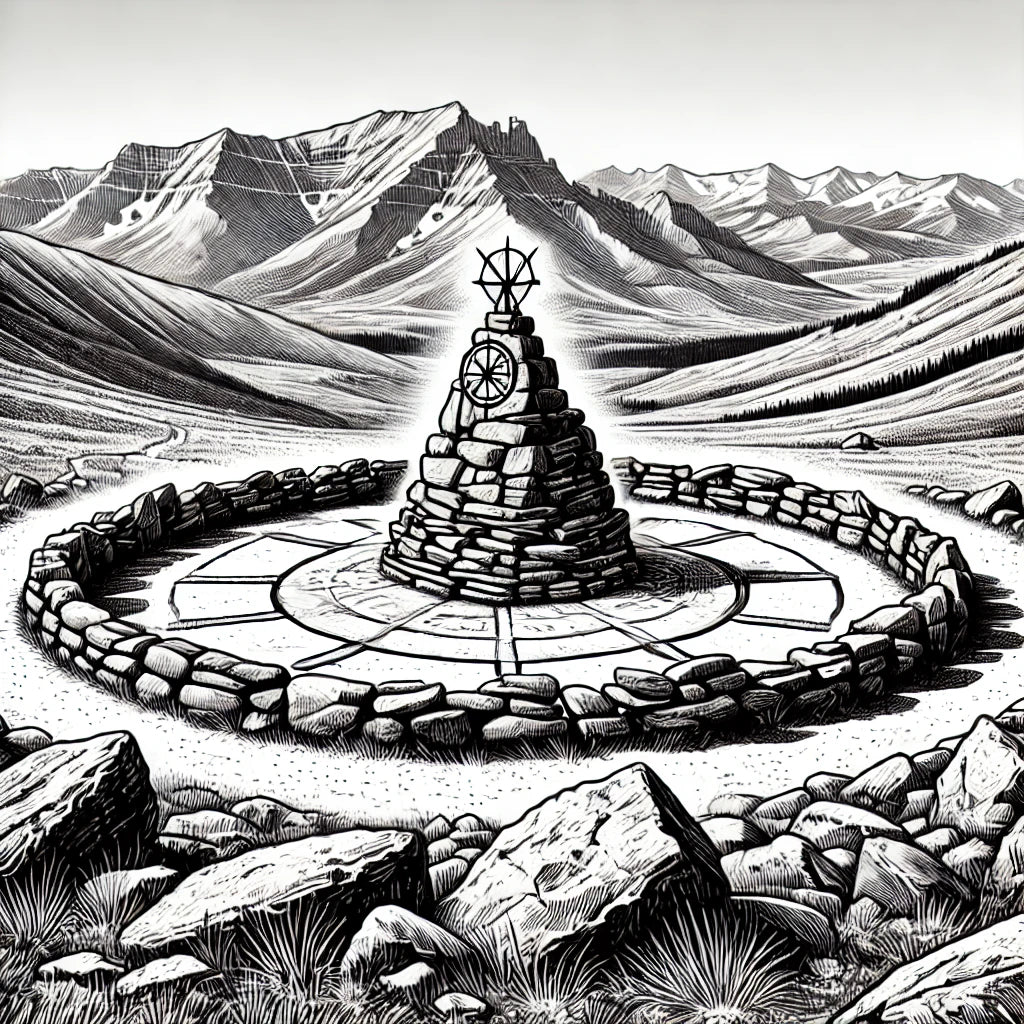
Medicine Wheel Monument: 700 Years of History
The Medicine Wheel, located in the Big Horn Mountains of Wyoming, is one of the most significant Native American sacred sites in North America. Perched at an elevation of nearly 10,000 feet, this ancient stone structure continues to inspire awe and reverence for its cultural, historical, and spiritual significance.
History and Cultural Significance
The Medicine Wheel is believed to be over 700 years old, though some estimates suggest it could be even older. Composed of limestone rocks, the wheel spans about 80 feet in diameter and features a central cairn connected to an outer circle by 28 radial spokes. Its design reflects celestial alignments, leading many to view it as an ancient observatory used for tracking solstices and other astronomical events.
For generations, the Medicine Wheel has been a sacred site for numerous Native American tribes, including the Crow, Lakota, Blackfeet, and Shoshone. It serves as a place of prayer, vision quests, and ceremonies, embodying a profound connection to the land and the cosmos. The wheel symbolizes balance and harmony, principles central to many Native American spiritual beliefs.
Visiting the Medicine Wheel
The Medicine Wheel is accessible via a short hike from a designated parking area on U.S. Forest Service Road 12. The trail offers stunning views of the surrounding Big Horn Mountains, with opportunities to spot wildlife and enjoy the serene alpine environment. Visitors should be prepared for high-altitude conditions and bring water, sunscreen, and appropriate footwear.
As a sacred site, the Medicine Wheel requires respectful conduct. Signs and guides remind visitors to honor its spiritual significance by avoiding climbing on the structure or disturbing prayer offerings left by Native American tribes.
Preservation and Stewardship
The Medicine Wheel and its surrounding area, known as the Medicine Wheel/Medicine Mountain National Historic Landmark, are protected under federal law. Collaborative efforts between the U.S. Forest Service, Native American tribes, and preservation groups ensure that the site is maintained for both cultural and educational purposes. These partnerships emphasize the importance of respecting Indigenous traditions and preserving the site's integrity for future generations.
A Place of Reflection
Beyond its historical and spiritual significance, the Medicine Wheel offers a unique opportunity for personal reflection. The breathtaking vistas, combined with the site's profound sense of peace, invite visitors to contemplate their connection to nature and the universe. Whether drawn by its history, spirituality, or natural beauty, the Medicine Wheel remains a place of wonder and inspiration.
Plan Your Visit
The Medicine Wheel is typically accessible during the summer months, from late June to early October, depending on snow conditions. Visitors are encouraged to check with the U.S. Forest Service for current accessibility and guidelines before planning their trip.
By visiting the Medicine Wheel, you can connect with Wyoming's rich heritage, experience the profound spirituality of the site, and gain a deeper appreciation for the enduring legacy of Native American cultures.
